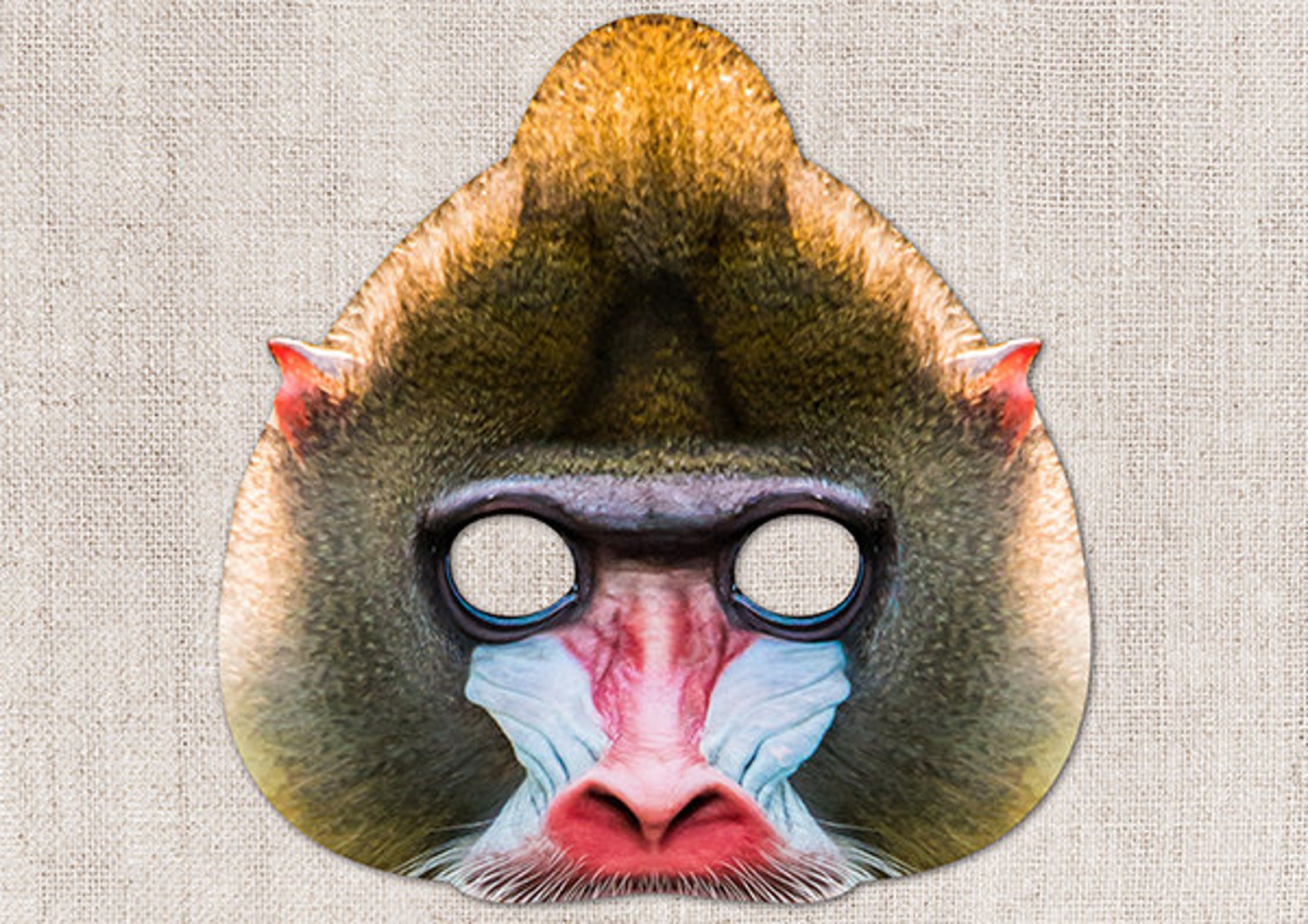Mandrill Rafiki: The Iconic Character That Stole Our Hearts
There’s something magical about the mandrill Rafiki. This iconic character from The Lion King has left an indelible mark on pop culture. Whether it’s his wisdom, quirky personality, or unforgettable moments, Rafiki is more than just a side character—he’s a symbol of guidance and growth. If you’ve ever wondered about the backstory behind this beloved mandrill, you’re in for a treat. Let’s dive deep into what makes Rafiki so special.
Who doesn’t remember Rafiki’s famous line, “Asante sana! Squash banana! We we nugu! Mi mi apana!”? It’s one of those phrases that sticks with you long after the movie ends. But there’s so much more to Rafiki than his eccentricities. He’s a mentor, a spiritual guide, and a friend to Simba. His role in The Lion King is crucial, shaping the protagonist’s journey and reminding us all of the importance of self-discovery.
Now, if you’re here because you want to know everything about mandrills and Rafiki, buckle up. We’re going to explore everything from his origins as a character to the real-life mandrill species he represents. By the end of this article, you’ll have a newfound appreciation for this legendary baboon-like creature and the lessons he teaches us. So, let’s get started!
Who Is Rafiki? A Biographical Look
Before we dive into the world of mandrills, it’s essential to understand who Rafiki truly is. Rafiki is a mandrill who serves as the shaman and advisor to the Pride Lands monarchy. His role in The Lion King goes beyond just being a wise old baboon; he’s a symbol of wisdom, tradition, and spiritual connection. Let’s take a closer look at his character through a biographical lens.
Rafiki's Vital Stats
Here’s a quick rundown of Rafiki’s stats:
| Full Name | Rafiki |
|---|---|
| Species | Mandrill |
| Role | Shaman and Advisor |
| First Appearance | The Lion King (1994) |
| Voice Actor | Robert Guillaume |
As you can see, Rafiki isn’t just any character. He’s a pivotal figure in the Pride Lands, guiding kings and offering wisdom to those in need. But what makes him truly unique is his personality and connection to the natural world.
Understanding the Mandrill Species
Now that we’ve got the character down, let’s talk about the real-life counterpart: the mandrill. Mandrills are fascinating creatures, and they share some interesting traits with Rafiki. Let’s explore what makes mandrills so special.
What Are Mandrills?
Mandrills (Mandrillus sphinx) are large, colorful primates native to the rainforests of equatorial Africa. They’re known for their vibrant colors, particularly the bright blue and red markings on their faces. These markings aren’t just for show—they play a role in communication and social behavior. Mandrills are also incredibly intelligent, making them a perfect fit for Rafiki’s wise persona.
- Habitat: Mandrills live in dense rainforests in countries like Gabon, Cameroon, and the Congo.
- Diet: Omnivorous, mandrills eat fruits, seeds, insects, and small animals.
- Social Structure: Mandrills live in large groups called hordes, which can consist of hundreds of individuals.
Rafiki's Role in The Lion King
Rafiki’s role in The Lion King is multifaceted. He’s not just a mentor to Simba but also a guardian of tradition and balance in the Pride Lands. Let’s break down his contributions to the story.
Key Moments with Rafiki
There are several pivotal moments where Rafiki’s wisdom shines through:
- Baby Simba’s Presentation: Rafiki performs a sacred ceremony to present Simba to the animals of the Pride Lands, symbolizing the circle of life.
- Simba’s Rebirth: When Simba is lost and full of guilt, Rafiki helps him confront his past and find the courage to return home.
- The Final Battle: Rafiki plays a crucial role in the climactic battle against Scar, using his wit and agility to aid Simba.
Lessons from Rafiki: Wisdom for Life
Rafiki isn’t just a character; he’s a teacher. His words and actions offer valuable life lessons that resonate with audiences of all ages. Let’s explore some of the key takeaways from Rafiki’s wisdom.
Embrace the Past
Rafiki famously tells Simba, “The past can hurt. But the way I see it, you can either run from it or learn from it.” This lesson is about accepting your mistakes and using them as stepping stones for growth. It’s a powerful message that applies to everyone, reminding us that our past doesn’t define us unless we let it.
Find Inner Strength
Rafiki encourages Simba to look within himself for the strength to face his challenges. This is a universal lesson about self-reliance and confidence. Sometimes, the answers we seek are closer than we think.
The Symbolism Behind Rafiki
Rafiki’s character is rich with symbolism. From his staff to his connection with the natural world, every aspect of Rafiki’s design has meaning. Let’s delve into the symbolism behind this iconic character.
Rafiki’s Staff
Rafiki’s staff isn’t just a prop—it’s a symbol of his role as a shaman. The staff is adorned with a gourd, representing fertility and life. It’s a reminder of Rafiki’s connection to the earth and his responsibility to maintain balance in the Pride Lands.
Mandrills in Pop Culture
Mandrills have made appearances in various forms of media, but none as iconic as Rafiki. Let’s explore how mandrills have been portrayed in pop culture and what makes Rafiki stand out.
Rafiki's Legacy
Rafiki’s legacy extends beyond The Lion King. He’s become a symbol of wisdom and guidance, inspiring countless fans around the world. His quirky personality and heartfelt wisdom have made him a timeless character.
The Science Behind Mandrills
For those interested in the science behind mandrills, there’s plenty to discover. Mandrills are fascinating creatures with unique behaviors and adaptations. Let’s take a closer look at the science behind these incredible primates.
Unique Traits of Mandrills
Mandrills have several unique traits that set them apart from other primates:
- Colorful Faces: Mandrills’ bright blue and red markings are a result of sexual dimorphism, helping them attract mates.
- Strong Jaws: Mandrills have powerful jaws that can crack open hard-shelled nuts.
- Social Behavior: Mandrills live in complex social structures, with dominant males leading large hordes.
Conservation Efforts for Mandrills
Unfortunately, mandrills face threats in the wild due to habitat loss and hunting. Conservation efforts are crucial to ensure their survival. Let’s explore some of the initiatives aimed at protecting these amazing creatures.
How You Can Help
There are several ways you can contribute to mandrill conservation:
- Support Organizations: Donate to organizations working to protect mandrills and their habitats.
- Educate Others: Spread awareness about the importance of conserving mandrills and their ecosystems.
- Reduce Your Carbon Footprint: By reducing your impact on the environment, you help protect the rainforests where mandrills live.
Conclusion: Why Rafiki Matters
Rafiki is more than just a character; he’s a symbol of wisdom, growth, and connection to the natural world. His lessons about embracing the past, finding inner strength, and maintaining balance resonate with audiences of all ages. Whether you’re a fan of The Lion King or simply interested in mandrills, Rafiki’s story has something to offer everyone.
So, what can you do next? Share this article with your friends and family, and let’s keep the conversation going. Together, we can celebrate the legacy of Rafiki and the incredible mandrills he represents. Remember, as Rafiki would say, “It’s time to look to the future—but don’t forget the past.”
Table of Contents
- Who Is Rafiki? A Biographical Look
- Understanding the Mandrill Species
- Rafiki's Role in The Lion King
- Lessons from Rafiki: Wisdom for Life
- The Symbolism Behind Rafiki
- Mandrills in Pop Culture
- The Science Behind Mandrills
- Conservation Efforts for Mandrills
- Conclusion: Why Rafiki Matters



Detail Author:
- Name : Blaze Bruen
- Email : [email protected]
- Birthdate : 1998-12-30
- Address : 7639 Mike Via Apt. 934 Rowehaven, DC 95306
- Phone : +1-234-698-1154
- Company : Russel-Spencer
- Job : Animal Scientist
- Bio : Perspiciatis rerum saepe libero ut voluptatum sint voluptatem. Aut eos recusandae saepe sit. Facere consequatur necessitatibus iusto aut.